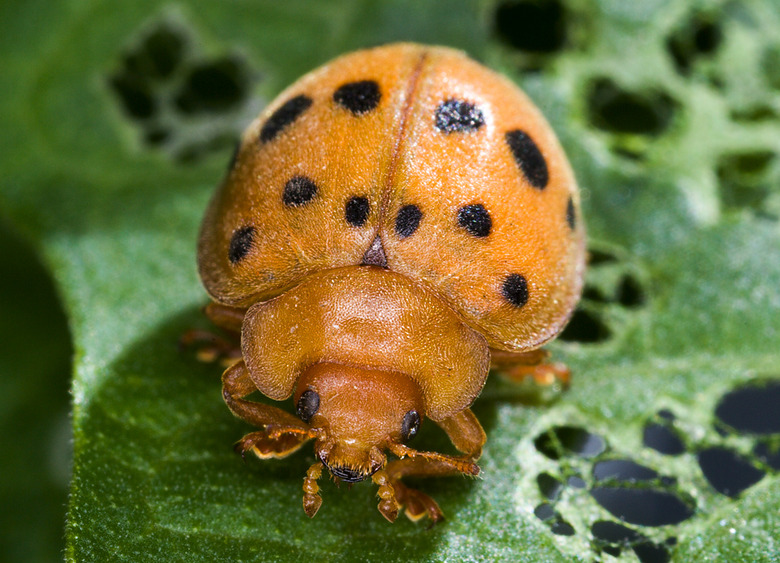How To Grow Pinto Beans
Pinto beans (Phaseolus vulgaris) are dry beans that can be identified by their speckled appearance. They are popular in Mexican cuisine and can be easily grown in the home garden.
Like with most dry beans, pinto bean plants are low maintenance, fairly easy to care for and may grow in either bush or pole form. Bush beans do not require a support, but pole beans must be trained on a trellis.
Can You Plant Pinto Beans from the Store?
Indeed you can, as long as they are still uncooked! Though it is advised to "inoculate" them, as outlined below.
Growing Pinto Beans From Seed
Here's how to grow pinto beans from seeds.
Inoculating Pinto Bean Seeds
Beans have a symbiotic relationship with the bacterium Rhizobium leguminosarum that allows them to turn nitrogen from the air into a form that the plant can use. This bacteria is abundant in all soils, however. Therefore, before planting pinto beans, it is a good idea to treat, or "inoculate," the seeds with this bacterium.
Soil Preparation
The ideal soil pH for beans is 6 to 7, which is slightly acidic. Good drainage is also key to growing pinto beans. Otherwise, root rot can occur.
Because they are legumes, beans do not need much fertilizer. Amending the soil with compost at a rate of 1 inch per 100 square feet of planting area ahead of time usually provides all the nutrients beans need for the growing season. A soil test can tell you if any additional amendments are needed prior to planting.
Tip
It is critical to wait until the soil has warmed to at least 65°F before planting, otherwise the bean seeds will not germinate properly and just rot in the ground.
Planting Pinto Beans
Bean seeds will not germinate properly if planted in soil that is too cold; they'll just rot. Therefore, it is critical to wait until the soil has warmed to at least 65°F before planting. Under these conditions, seeds germinate in seven to 10 days.
Pinto beans should be planted in rows at a depth of approximately 1 inch. Allow about 4 inches of space between seeds. If you are growing a pole variety of pinto bean, set up wooden trellises at planting time to support the plants.
When planting pinto beans, keep in mind that beans need at least six hours of sunlight a day for best production. Choose a site accordingly.
Pinto Bean Plant Care
- **Watering Pinto Beans:** Bean plants need about an inch of water a week. It is especially crucial to provide beans with enough water when the plants are flowering and pods are developing. Beans growing in sandy soils will need more frequent watering than those grown in heavier clay or silt soils that better retain moisture.
- **Weed Control:** Keeping weeds in check is an important part of growing beans. Cultivate the soil around the bean plants to control weeds, but be careful not to damage the bean plant's roots in the process. Applying a layer of organic mulch 3 to 4 inches thick around the plants can also help reduce weed activity as well as preserve moisture.
Pinto Bean Diseases and Pests
Let's take a look at some of the most common pests and diseases that can affect pinto plants.
Pests
- **Aphids:** Aphids are small, soft-bodied insects that feed on sap on the underside of leaves. They can be vectors for disease. It is sometimes possible to remove aphids from a bean plant using a strong stream of water.
- **Leafhoppers:**
Like aphids, leafhoppers feed on leaf sap and can spread diseases. However, they are difficult to control because, unlike aphids, they are mobile.
- **Beetles:** The Mexican bean beetle and spotted and striped cucumber beetles can chew holes in the leaves of bean plants. Large, healthy plants are usually not affected. Handpicking beetles off the plants can help control them.
Viruses
Pinto beans are affected by a number of plant viruses, including bean common mosaic virus and beet curly top virus. These viruses are spread by aphids and leafhoppers, respectively.
Tip
Many viruses and other diseases also spread on infected seeds. Therefore, it is important to always grow beans from certified, disease-free seed. Discard seeds from plants known to be diseased.
Bacterial Blights
Bacterial-caused blights that manifest as water-soaked lesions on various parts of bean plants thrive in wet conditions, to avoid wetting the plant's foliage when watering. Avoid handling the plants when they are wet.
White Mold
White mold, which produces a cottonlike growth on the leaves of bean plants, is another disease that can be prevented by keeping the foliage dry. Giving the plants enough space for air to circulate is also key.
Tip
The pathogens that cause common bean diseases, including viral conditions, blights and molds, can linger in the soil for years. Therefore, it is a good idea to practice crop rotation, which means not planting beans in the same place in consecutive growing seasons.
Harvesting Pinto Beans
**Pinto beans are usually ready to be harvested after about 90 days.** Dry beans, like pinto beans, are ready to be harvested when the pods dry out completely. The beans inside the pod should also be dry to the point that they make a rattling sound when you shake the pod.
It is important not to wait too long to harvest pinto beans, as dry pods can shatter.
References
- Washington State University Extension Fact Sheet: Vegetables: Growing Dry Beans in Home Gardens
- Utah State University Extension: Beans in the Garden
- University of Minnesota Extension: Growing Beans in Home Gardens
- Cornell University: Pole Beans, Green Beans (Pole), Wax Beans (Pole)
- Missouri Botanical Garden: Phaseolus vulgaris

